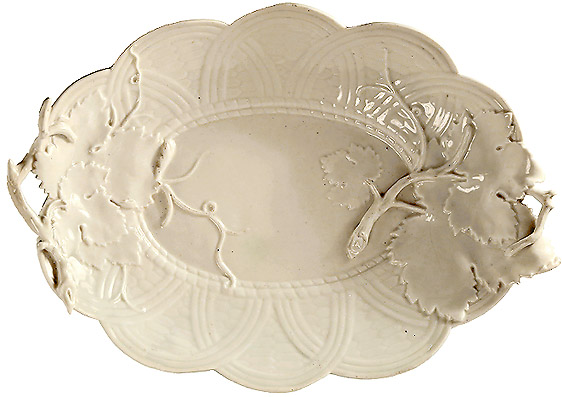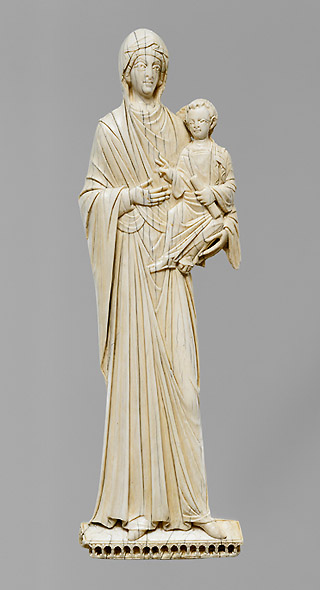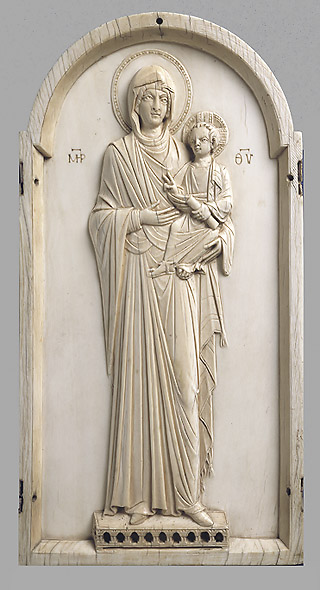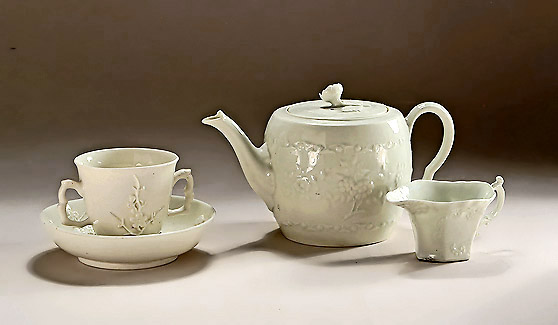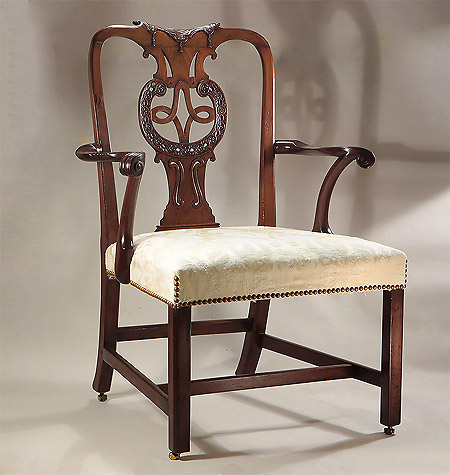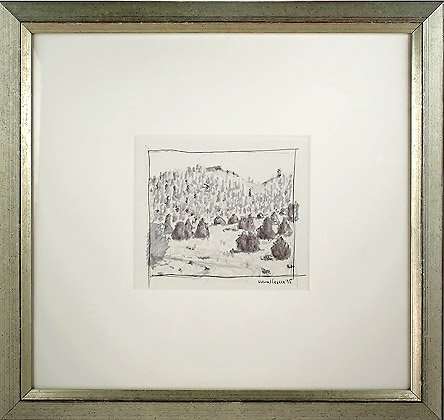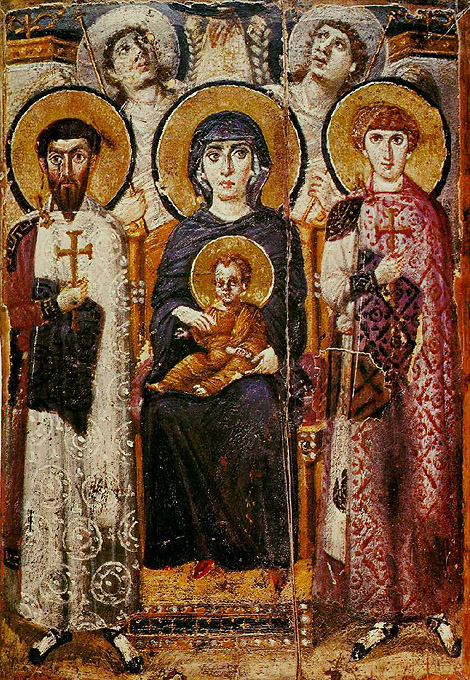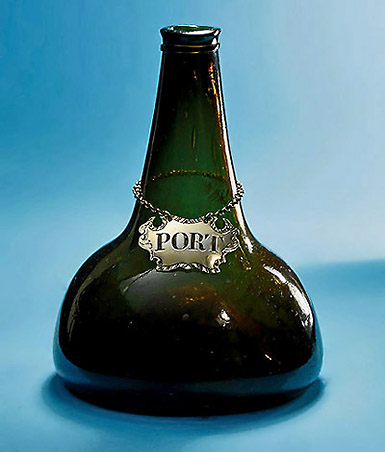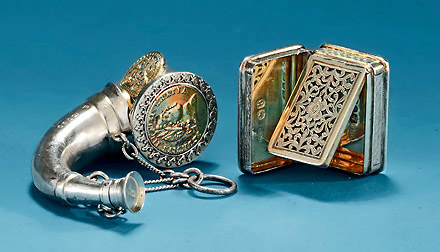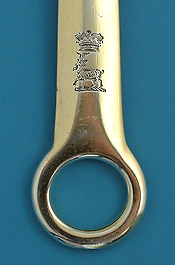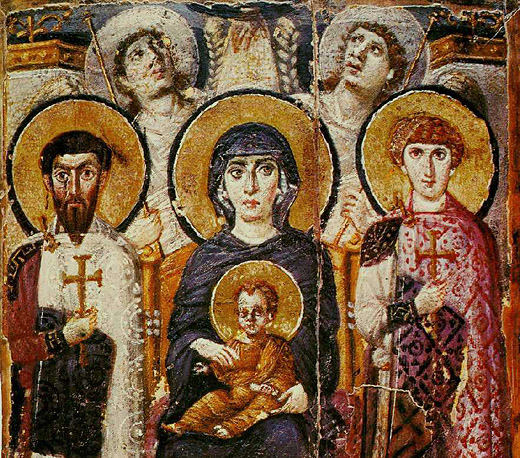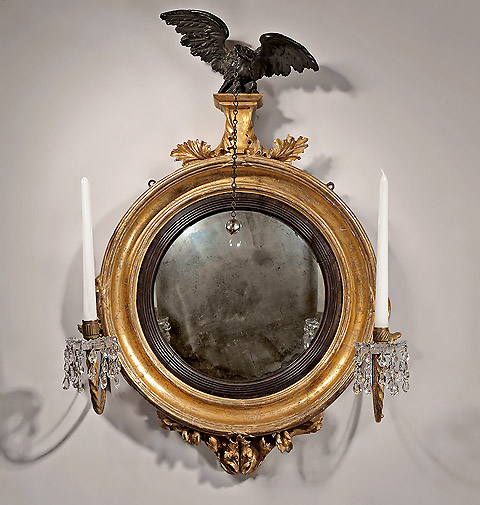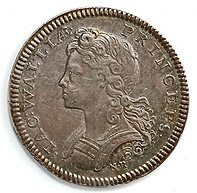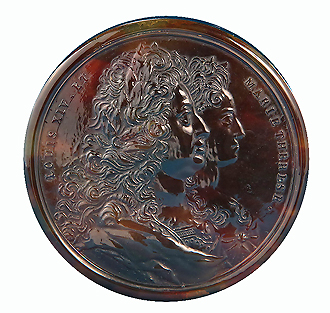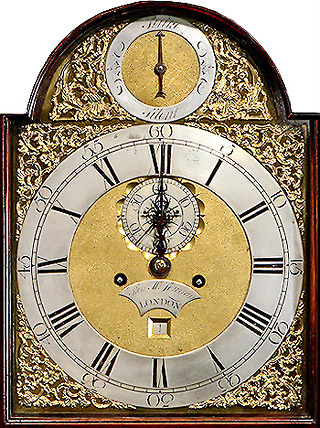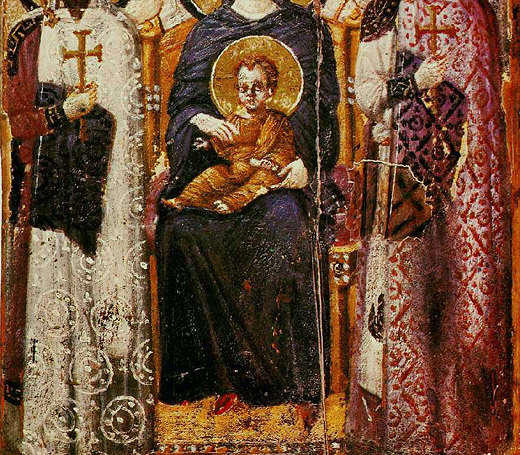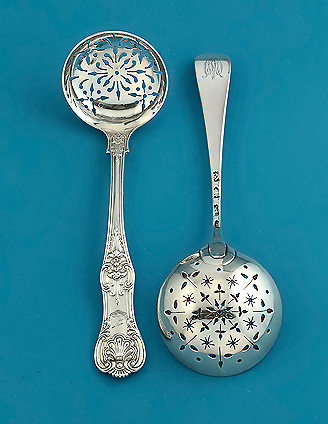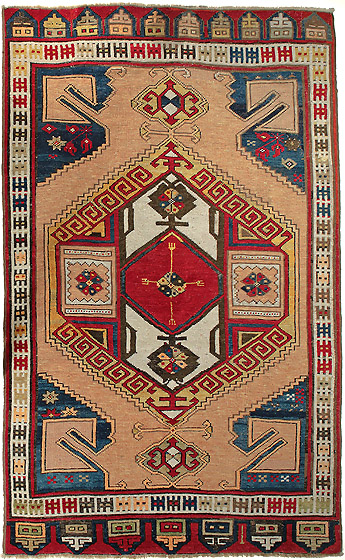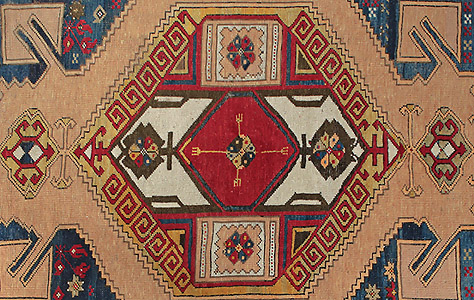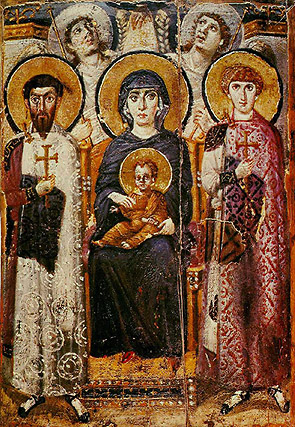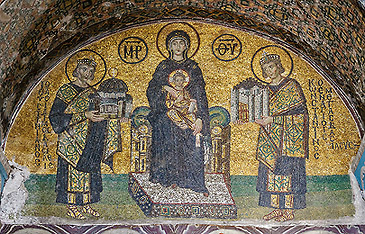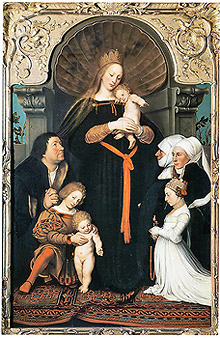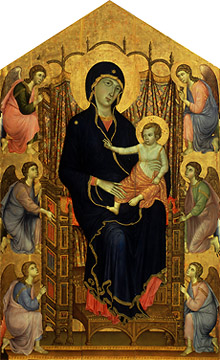|
M. FORD CREECH ANTIQUES & FINE ARTS
CHRISTMAS 2018 : PART I from Byzantine, to Bouguereau
As winter and Christmas approach, most of us begin to envision the myriad of symbols connected with the season - from Solstice to Santa, Rudolph, and everything in between. However it seems the epitome of the season is too oft omitted : the historic and inspired depictions of the Madonna and Child that have transcended time - cultures - even continents.
For about 1000 years (500-1500 AD), from the overly restrained Byzantine and Gothic, until the advent of the Renaissance, most Western art was both devotional & instructional in nature. The images in these works could be read - just as we read a book today. In the small c1380 Italian personal devotional triptych (above), each image carried a 'universal' - and clearly understood - meaning. However, I might add that when spending time with icons as this, often no words were really needed. The experiences have been quite special - and humbling.
And thus we wish to present a Christmastime Tribute to these 'magical' early works - their passionate and skilled creators - and their sheer survival through centuries of untold 'perceptive' clashes. Throughout our "Christmas 2018" Catalogs, we are depicting a few purposely - and sequentially - selected "Madonna and Child" images - primarily from the Byzantine period, to a triumphant 19th century Bougeureau.
As these icons and early representations also provided "the foundation for Western fine and decorative arts" that we know today, we will attempt to connect them - and their 'picture language' - with now-familiar motifs and symbols in life and the arts - and hopefully a renewed understanding of what was said so many centuries ago.
We can think of no finer way to celebrate the Christmas Season!
THE EARLIER PERIODS, to c1000 AD
'Venus of Dolní Vestonice', 29,000 BC-25,000 BC
Devotional icons of the female figure actually exist worldwide. They are known to date back to about 30,000 BC - first as a small carved prehistoric 'earth mother', and later as an ancient communicator with the 'spiritual' and 'heavens'.
Egypt, Mesopotamia, Greece and Rome had copious goddesses (& gods) - most imbued with 'ferocious powers' and 'sensual natures'. Should you get out of line, Greco-Roman deities might turn you into a lizard or a cow, rearrange your children's eyes on their faces, or have your fields ravaged by a giant boar - a model of which might be a toy for your child! Below are two such fanciful figures :
Two Small Hellenistic Terracotta Figures of Boars : the larger said indeed to have been a young Grecian's toy, 333-189 BC. Left : Hellensitic Figure of a Standing Boar, 2nd - 1st Century BC Right : Hellenstic Terracotta Figurine of a Pig in Flight, 2nd - 1st Century BC
These early gods and goddesses have long been subjects of myth and fascination - romanticized even to this day. Here are three wondrous & fanciful representations (17th, and 19th centuries) from our collection :
Good Set of Four Carved Oak Panels 17th Century English or Dutch Depicting Four Roman Gods : Jupiter, Diana, Mars and Sol with their 'attributes of great empowerment'
Narcisse Virgile Diaz de la Peña France, Oil on Panel over Pencil, 1854 Exhibition of the French Masters, 1951, No. 18; Marlborough Fine Art, London Wonderfully sensual! - yet with some veiled 'ethereal' overtones Victorian Bacchanalian Silver Wine Taster Rosenthal, Jacob & Co, London 1884 Embossed to the center with a celebrative and horned Bacchus mask amidst blooming vines (also sensual - and a tad scary!) - welcome to the wonderful world of wine!!
Into these cultures came an entirely different female deity image - and one that eventually superseded all others : the humble "Madonna and Child". Rather than representing 'power', being clad in 'elaborate clothing', and somewhat 'removed from humanity' - the Madonna was clothed as ordinary women of her day - in simple dress and plain mantle, depicted as a mother holding her Child, and more importantly, 'accessible to all in need' --- as depicted in this small early manuscript below : the oldest surviving depiction of the Madonna & Child in Western manuscript art.
From the "Book of Kells" (transcribed by Celtic monks c 800 AD), this manuscript is considered Ireland's finest national treasure.
Noteworthy herein are the 'colors' of illumination, depicted in "earth tones" of rich woods and leaves, the pigments including red, yellow ochre, green copper pigment (verdigris), and indigo. Generally the reds and ochres represented 'earth', whilst the blues (absent here) bespoke of 'heaven'. (There will be more about the all important 'blues' in another segment').
Prior to the 'rich earth tones' pictured above, during the earlier 'Middle Ages', the Madonna had most often been depicted in 'white' and 'gold'.
"WHITE" & "IVORY" :
Chelsea Porcelain "White" Leaf & Basket Moulded Stand England, c1754-6
White and its related shades of cream and ivory possess a number of universal principles. One is 'endurance'. Another is 'purity'. Yet another is 'fresh beginnings'. 'White' in pigment is considered 'the lack of color'. 'White' in light is considered 'the union of all colors'. A touch of 'gold' to white makes 'ivory' - with even further symbolism.
It matters not the size or the age. The principles will attend the color - just as that wondrous sense of quiet and beauty accompanies the first winter snow.
The "Hodegetria", Ivory Figurines, c 950-1050 AD
The "Hodegetria" ('She Who Guides', or 'Points the Way') is a representation of a Byzantine Madonna, named after the Hodegon Monastery, where guides assisted the blind to a miraculous spring believed to restore sight. Only a handful of these "Hodegetria" icons (in the Byzantine manner) are known.
The Madonna (right) is with the St. Catherine Convent , Utrecht, still with original plaque, inscribed with the Greek letter combinations "MHP" and "TU", meaning 'Mother of God' (11" high). The Madonna (left) is with the Metropolitan, NYC, carefully preserved whilst removing the figure from its original eroding plaque. (9-3/16" high).
According to tradition, St. Luke painted the first portrait of Mary and Child circa 60 AD. Supposedly found by St. Helena, mother of Constantine, in 326 AD, this portrait set the 'Byzantine convention' ('canon') of Western depiction for the next 700 years. The more apparent conventions (seen above) include : - slim elongated figure (10 heads high) - oval face with exaggerated forehead and almond eyes - the child resting on the left arm. Also note the Hellenistic influence of vertically pleated garments.
These ivory Hodegetria figures are the finest representations of the Byzantine canon : "a sophistication of style and a spirituality of expression rarely paralleled in Western art".
FURTHER SELECTIONS IN "WHITES" :
Chelsea (the above porcelain stand), and Bow Manufactories (both operating in London) were two of the first British producers of finer soft paste porcelain - their "white-glazed" wares being among the earliest and most collectible. Worcester followed a few years later, but made very few porcelains left in the white
A Selection of White-Glazed Bow & Worcester Soft Paste Porcelain England, c1755-70 My observances have been that white and white-glazed porcelains enable viewing the ceramic for its own beauty and form - rather than painted as an imitation of nature : Bow Porcelain White Chocolate Cup, England, c1752 and a Saint-Cloud White Trembleuse Saucer, France, c1720-30 First Period Worcester White-Glazed Porcelain Teapot, c1758-60 Thinly Potted Worcester White-Glazed Hexagonal Creamboat, c1762
Early George III Scottish Carved Mahogany Open Armchair Edinburgh (likely), Scotland, c1765 in the manner of Alexander Peter (responsible for some of the Dumfries House furnishings) Ivory to White 'Scalamandre' raw silk damask covering. Also note how rich a color mahogany appears with shades of white - something seldom mentioned.
Norwood Creech / Tennessee / Arkansas Contemporary "Small Square Wyoming Hills with Trees and Bushes" Pen and Graphite on Paper
the subtlety and playful intracacy inviting extended viewing of what appears to be a hillside of "Christmas Trees"!
Victorian Silver Stilton Cheese Scoop Mappin & Webb, Sheffield, 1878 (to accompany your holiday wheel of Stilton)
Another early style predating the Byzantine "canon" combines Hellenistic-Roman and Byzantine. (If you recall, the four Gospels and other New Testament books were written in Greek, and many early Christians belonged to Greek communities in the eastern Mediterranean).
Among these, at the foot of Mt. Sinai, remains St. Catherine's Monastery, built by the Emperor Justinian 548-565 AD, and now a UNESCO World Heritage site. It houses some of Christianity's earliest manuscripts, icons, and mosaics, including :
"Virgin and Child with Angels and Sts. George and Theodore" "Encaustic"( Hot Wax and Pigment ) on Wood, c600 AD
The wax imbuing a "heavenly glowing effect" akin to precious "gold and silver", as seen in the halos, and rich "Byzantine silk" gowns above. (Byzantium was at the time the predominant Western silk-producing center).
This icon, was intended as a focus of worship, rather than work of art. The Madonna is "enthroned", dressed in a deep royal purple, surrounded by the richness of gold and silver. She holds the Child in her lap, both looking to the right rather than meeting our gaze. The angels behind look upward in apparent awe. And the viewer is invited to do the same.
"GOLD", "SILVER", and "SILVER-GILT"
"Gold", of course, is considered the most noble of metals. It is seemingly eternal - unaffected by time, as well as most corrosive acids. In some forms of Christianity and Judaism, gold also had various spiritual associations. As we see above, gold was greatly favored in Byzantine iconography, particularly in the halos of Christ, Mary and the Saints.
"Silver" is also a precious metal - so ancient that its discovery has been lost to history. At some periods of time, it was even more expensive than gold. However its lustrous surface tarnishes from oxidation, needing periodic polishing for revival.
"Silver-gilt" is silver that has been gilded with gold - sometimes even appearing as pure gold. The gilding of silver enhances the silver and its intrinsic value, whilst it protects the silver from oxidation and the resultant tarnish. Thus silver-gilt is of great value when the surfaces touch acid of any kind - as alcohol, vinegar, tobacco, or certain acidic foods.
The Eastern European cultures also used silver & silver-gilt on their icons. Known as "Oklad", these often-gilt metal coverings were two-fold : for honor, and once more, for protection from the blackening of candle soot.
Early George III Silver-Gilt Escutcheon Form Bottle Ticket, 'PORT' Richard Binley, London, c1760 The cartouche form is one of the earlier forms of bottle tickets, made for the early 'carafe' decanter, having only a cork stopper; displayed on an excellent English Blown c1710-20 Black Onion Bottle, with high kick-up to the base, quite suitably "green" for use on both traditional and contemporary Holiday tables
Victorian Silver Sampson-Mordan Vinaigrette & Scent, The Cover a George III Gilt Token, 1872 The entire interior gilt , including the hinged pierced foliate grill George III Silver-Gilt Vinaigrette Cocks & Bettridge, Birmingham, 1799 The entirety gilt, both within and without. Vinaigrettes held smelling salts suspended in vinegar - thus the need for gilded surfaces.
George III Silver-Gilt Meat Skewer Richard Crossley, London, 1802 crested with 'a goat passant attired', below a 'ducal coronet' Silver skewers are replacements for aluminum skewers removed after cooking the Christmas turkey or roast - both for table 'presentation', and ease of carving.
Both gold and silver have continued to enhance icons and paintings throughout the centuries, as embellishment within, and an encasement without. Each added its own attributes. And both still grace our homes, hands, ears, and investments - such is their enduring beauty!
"HALOS" & "CIRCLES" :
Of equal note within this historic encaustic are the boldly outlined "circular halos".
"Circles" are an ancient archetypical form depicting oneness - having no beginning or end. Both empty circles and circles with dots (sun and / or supreme beings) have been found in almost every culture in the world - and prior to communication between civilizations.
"Halos" exist in various ancient cultures - some say back to Sumerian. Most are circular, but triangular and rectangular halos are also known. They have been used to indicate sacred figures, as well as heroes and rulers. The halo was, not until the 4th century, incorporated into Christian art - this icon representing indeed a very early usage - and 'outlined' (a style also seen in the contemporary Istanbul Hagia Sophia mosaics).
There is a magical phenomenon regarding placement of 'subjects' within circles : those so-encased can take on qualities of 'affection', 'empowerment', even 'reverence', including, perhaps ... Yourself :
Fine Regency Giltwood & Mahogany Diminutive Convex Girandole Mirror England, c1810, The all-seeing glass, 11.5" Wide, and 21" Wide, with Original Gilt and Glass Bobeches
… Along With A Bit of Royalty :
|
Jacobite Medal : Prince James III,"The Old Pretender" Norbert Roettiers, London, 1699 Bust of James III, Armored / Sun rising over sea with ships (in relation to Louis XIV). Advocates of Prince James (then 9 years old) issued several tokens supporting the 'Stuart cause'. "CLARIOR E TENEBRIS", means from darkness to the light.
Moulded Tortoiseshell Portrait Snuff Box Depicting the 'Sun King' Louis XIV & Marie-Thérèse France, 18th century with whom both James II and James III resided in the late 17th century
… And The Stately 'Clockface' (by whom we have all been governed!) :
George III Figured Mahogany Longcase Clock Kenneth Maclennan, London, c1778-90 having the original face, works and surfaces Kenneth Maclennan is recorded in "Old Clocks & Watches & Their Makers", F. J. Britten, 1904, as working in London between 1778 and 1825 at May's building, St. Martin's Lane. It is also noted that he made a planetarium for the "Royal Institute" in 1801
The "CROSS", both upright - and diagonally as a "SALTIRE"
During the 4th century, the Cross also entered Christian art - this icon, once again, having a very early depiction.
The "Cross", of course, is also an ancient archetypal symbol : perhaps earliest as fire and lightning, thence to consecration, and eventually having a religious nature. The basic 'geometry' interprets : the upright stroke - God to man, and man's aspirations to higher things; the horizontal - man to man; and their union --- "Harmony"!
The saint's gown (to the right) is enhanced with "Saltires". Also an ancient symbol, this X-form cross was associated in Roman times with 'barriers', coinage, the number 10 (X), later in both heraldry and many international flags : (British Union Jack, Scotland, and Jamaica, to name a few) - even now as modern railroad crossings, and good luck (fingers crossed). In Christian symbolism, the Saltire also represents the cross of St. Andrews.
"Crosses" and "Saltires" are, to this day, integrated into the decorative arts as a motif, perhaps most often in silver, as well as the afore-mentioned heraldry.
Scarce Victorian Queen's Pattern Silver 'Sugar Sifter' Francis Higgins, London, 1882 Rare Early George III Silver Sugar Sifting Ladle William Tant, London, c1762 (Also used for other spices, as cinnamon and nutmeg)
George III Silver Shell-Back 'Mote Spoon' James Tookey, London, c1765 The bowl pierced with saltires & foliate scrol (Used for cleaning the left over leaves when brewing tea)
The "CROSS" or "CRUCIFORM" in Oriental Rugs
In the 13th century, Oriental carpets began to appear in Italian paintings. Rugs were then regarded as having both spiritual and worldly power, the "cross (cruciform motif)" frequently featured. Although some regard the cruciform motif as purely decorative, others believe it 'spiritual' : the relationship between heaven and earth. Still others contend the cruciform evolved from Eastern Christian cultures.
Antique Konya-Karapinar with Cruciform Center Anatolia, Late 19th Century
A bold and beautiful geometric example of unusual coloration, the camel ground with a Karapinar medallion and tulip-studded "cruciform" center
The Oriental carpet continues to appear in Western religiously based art throughout the Middle Ages and well into the Renaissance Period. We will show you another later in a Hans Holbein "Madonna" of 1526-7.
Perhaps the most compelling aspect of this fragile "encaustic" is its mere survival for 1400+ years, in a multi-cultural area, sacred to three conflicting doctrines - Judaism, Christianity, and Islam - yet with continued unrest.
Its transcendence beyond all remains a testament to the accord that humankind really can reach. Perhaps that just might be … "Harmony"!!
And more to come…
In the meanwhile, we wish you all A HAPPY … & "HARMONIOUS"… HOLIDAY SEASON !
Millicent Creech Anna Bearman Camille Fleischauer Keith Rainer
(Please click the above 'stock images or titles' for more information and images, including the "three glasses" immediately above.)
|
Legend for 'Christmas 2018, Early Period to 1000 AD' :
"Madonna and Child Enthroned with Saints", Maestro di Panzano, c1380-1400; Siena, Italy; The Walters Art Gallery, Baltimore, USA "Venus of Dolní Vestonice", 29,000 BC-25,000 BC, found 1925, Moravia, one of the oldest known ceramic articles in the world; CC BY-SA 2.5 ; Credit to Petr Novák, Wikipedia "Madonna and Child" from the Book of Kells, Folio 7v, Late 8th century, (transcribed by Celtic monks c 800 AD), currently on display at Library of Trinity College, Dublin, Ireland The "Hodegetria", c950-1050 AD, Metropolitan Museum, NYC The "Hodegetria", c950-1050 ADSt. Catherine Convent , Utrecht, Netherlands "Virgin and Child with Angels and Sts. George and Theodore", St. Catherine's Monastery, Mt. Sinai, Egypt, c600 AD (The Above Liscened by Creative Commons) Inventory Photography : Millicent F. Creech
|
|
Please click the above images or titles for more information and images.
901-761-1163 (gallery) / 901-827-4668 (cell)
M. FORD CREECH ANTIQUES & FINE ARTS 581 S. PERKINS ROAD / LAURELWOOD COLLECTION / MEMPHIS, TN 38117 Hours : Wed.-Sat. 11-6, or by appointment Complimentary Gift Wrapping
mfcreech@bellsouth.net or mfordcreech@gmail.com
To receive our periodic email catalogs, please click here
American Express, Mastercard, Visa and Discover accepted
|
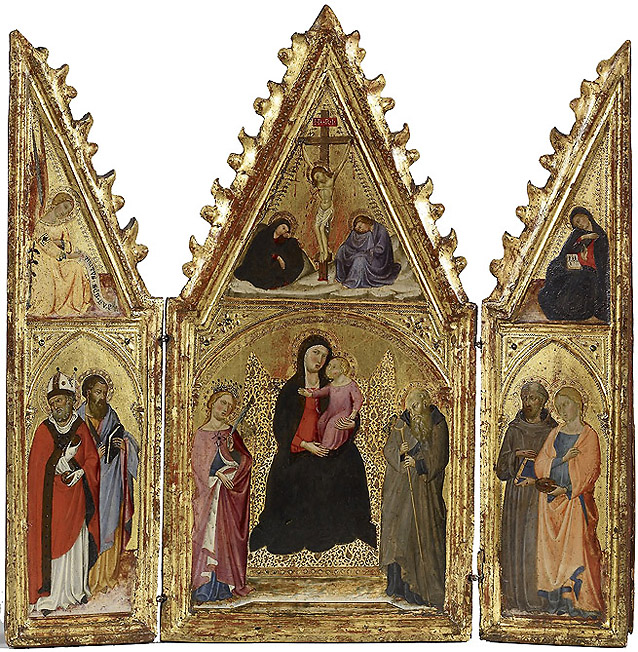
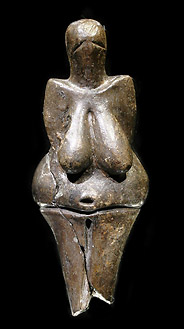
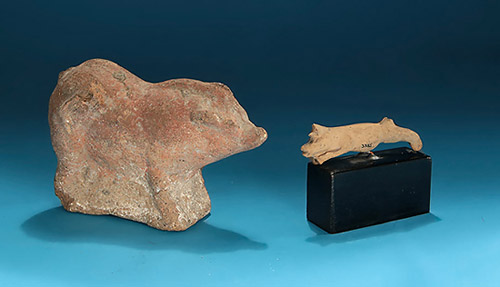
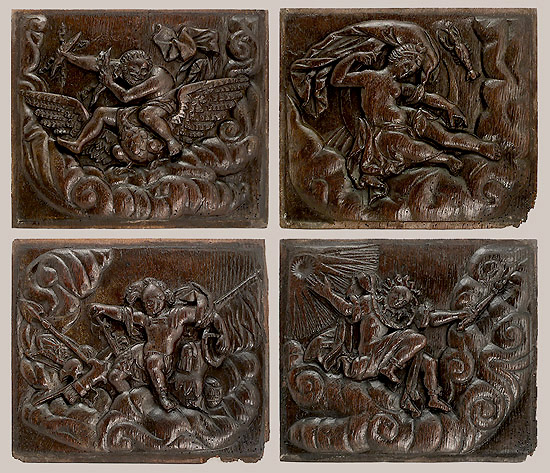
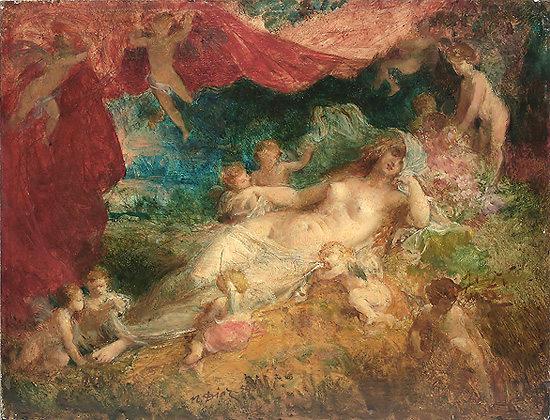
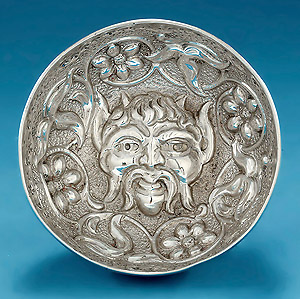
Child_Trinity_College_Ireland_590h.jpg)
